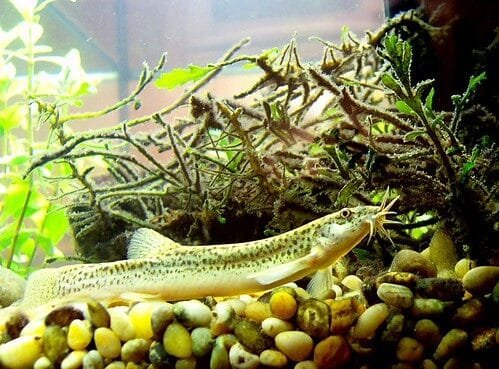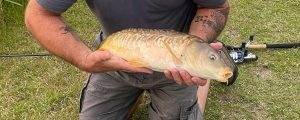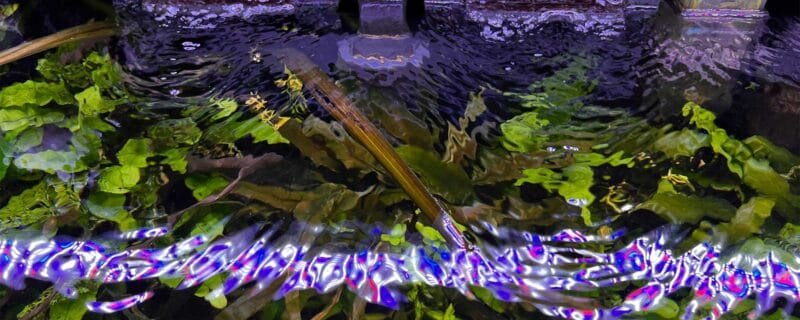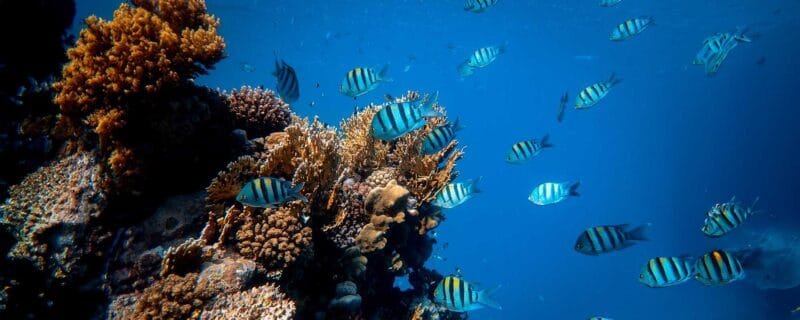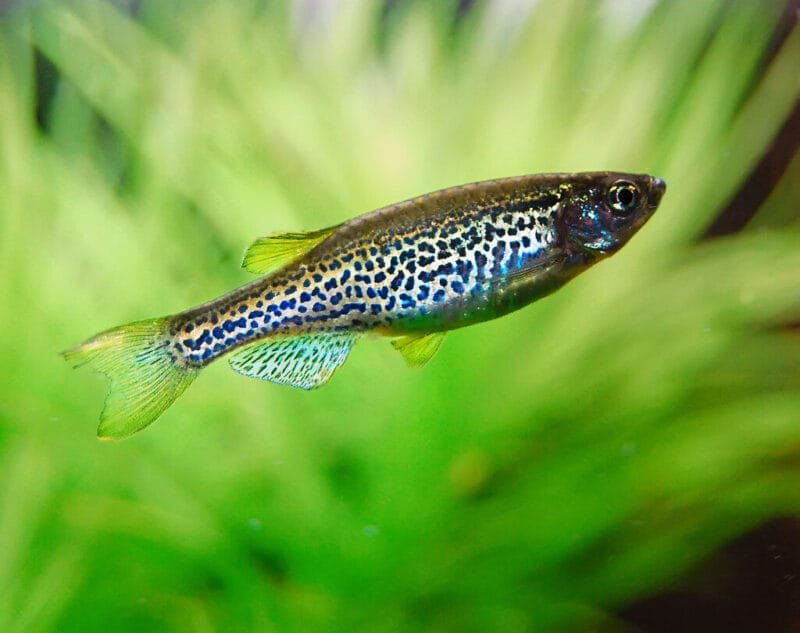The Common Roach (Rutilus rutilus) is a well-known freshwater fish that has been a part of European rivers, ponds, and lakes for centuries. Recognized for its silvery body and red-tinted fins, it’s a resilient species often found in mixed fish communities. While not a traditional aquarium favorite compared to tropical species, the Roach holds a special place for those interested in native or coldwater setups. This guide explores everything you need to know about caring for, breeding, and understanding this fascinating fish.
Native Range and Habitat
The Common Roach is native to Europe and northern Asia, inhabiting rivers, lakes, canals, and slow-moving streams. It prefers clear, well-oxygenated waters with plenty of vegetation. In the wild, they are often found schooling in the middle or lower water column, seeking refuge among aquatic plants and submerged structures. They can tolerate a variety of water conditions, which contributes to their widespread presence.
Size and Lifespan
Adult Common Roach typically reach lengths of 20–35 cm (8–14 inches), although some can grow larger in natural lakes and reservoirs. In captivity, their growth depends on tank size, diet, and water quality. They can live for up to 10–15 years when provided with stable, healthy conditions.
Appearance
Common Roach have a compressed, silver body with a bluish-green back and striking red-orange fins. Their eyes are orange-red, and they possess a slightly upturned mouth ideal for surface and mid-water feeding. Albino variants of the Roach display a creamy white body with pale fins and pinkish eyes—rare but highly prized in ornamental coldwater collections.
Diet and Feeding
Roach are omnivores and opportunistic feeders. In their natural environment, they feed on plant matter, algae, insects, crustaceans, and detritus. In aquariums or ponds, they readily accept flake food, pellets, frozen bloodworms, and vegetable-based feeds. A varied diet enhances their coloration and overall vitality.
Feeding Tips:
- Offer a mix of live and frozen foods such as daphnia or brine shrimp.
- Include algae wafers or blanched vegetables like peas and spinach to support digestive health.
- Feed once or twice daily, ensuring all food is consumed within minutes to prevent water quality issues.
Sexing the Common Roach
Sexual dimorphism in Roach is subtle. During the breeding season, males develop small white tubercles (breeding stars) on their head and body. Females are generally fuller-bodied, especially when gravid. Outside of spawning periods, distinguishing males from females can be challenging.
Breeding and Spawning Behavior
Breeding typically occurs in spring when water temperatures rise above 12°C (54°F). Roach spawn in shallow, weedy areas, where females release adhesive eggs that attach to vegetation. The eggs hatch within a week, and fry feed initially on plankton and microalgae before transitioning to larger foods.
Captive Breeding Conditions:
- Provide a spawning substrate such as fine plants or artificial spawning mops.
- Gradually increase water temperature and simulate seasonal daylight changes.
- Separate adults after spawning to prevent egg predation.
Water Conditions
Being hardy fish, Common Roach can adapt to a range of water parameters. However, for optimal health, stable and clean water is key.
Recommended Water Parameters:
- Temperature: 10–22°C (50–72°F)
- pH: 6.5–8.0
- Hardness: 5–20 dGH
- Ammonia/Nitrite: 0 ppm
- Nitrate: <40 ppm
While they can tolerate cooler water, strong filtration and regular maintenance are essential. For more guidance on proper filtration systems, visit Choosing the Right Filter for Your Aquarium.
Tank Setup and Habitat Design
Common Roach are active swimmers that thrive in spacious tanks or garden ponds. A minimum of 100 gallons is recommended for a small group. Include plants such as Amazon Sword or native pond species for shelter. A sand or fine gravel substrate, combined with good water movement, helps mimic their natural habitat.
Ideal Tankmates:
Roach are peaceful and suitable for community setups with other coldwater species such as:
Avoid housing them with aggressive predators or tropical fish requiring warmer temperatures.
Ease of Care
The Common Roach is considered easy to care for, making it suitable for beginners interested in native fishkeeping or outdoor pond environments. Regular water changes, balanced feeding, and sufficient space ensure their well-being. Their adaptability to various temperatures and diets makes them resilient and forgiving of minor fluctuations.
Species Variations and Albino Form
Several regional variations of Rutilus rutilus exist across its vast range, displaying subtle color or size differences. The Albino Roach is a rare but eye-catching form featuring pale cream coloration and red eyes. While behaviorally identical to the standard Roach, the albino variety benefits from shaded areas and subdued lighting to reduce stress.
Compatibility in Community Tanks
Roach integrate well in peaceful coldwater communities. Their schooling nature means they should be kept in groups of at least five to reduce stress and encourage natural behavior. They cohabitate nicely with bottom dwellers like loaches and surface feeders like goldfish, creating a balanced and dynamic environment.
FAQs
1. Can I keep Common Roach in a tropical aquarium?
No, the Common Roach prefers cooler water temperatures between 10–22°C. Warmer tropical environments can stress them and shorten their lifespan.
2. Are Common Roach suitable for garden ponds?
Yes, they are excellent pond fish, thriving in well-oxygenated outdoor environments. They coexist peacefully with other coldwater species like goldfish and tench.
3. How do I know if my Roach are ready to breed?
As temperatures rise in spring, males develop small white spots on their heads (breeding tubercles). Females become rounder, indicating readiness to spawn.
Conclusion
The Common Roach (Rutilus rutilus) is a resilient and fascinating freshwater fish ideal for naturalistic aquariums or outdoor ponds. With its shimmering scales, calm temperament, and tolerance for varied conditions, it makes an excellent choice for hobbyists seeking a connection to native European waters. Whether in a pond or a large coldwater aquarium, providing them with space, clean water, and a varied diet ensures they thrive for years to come.

